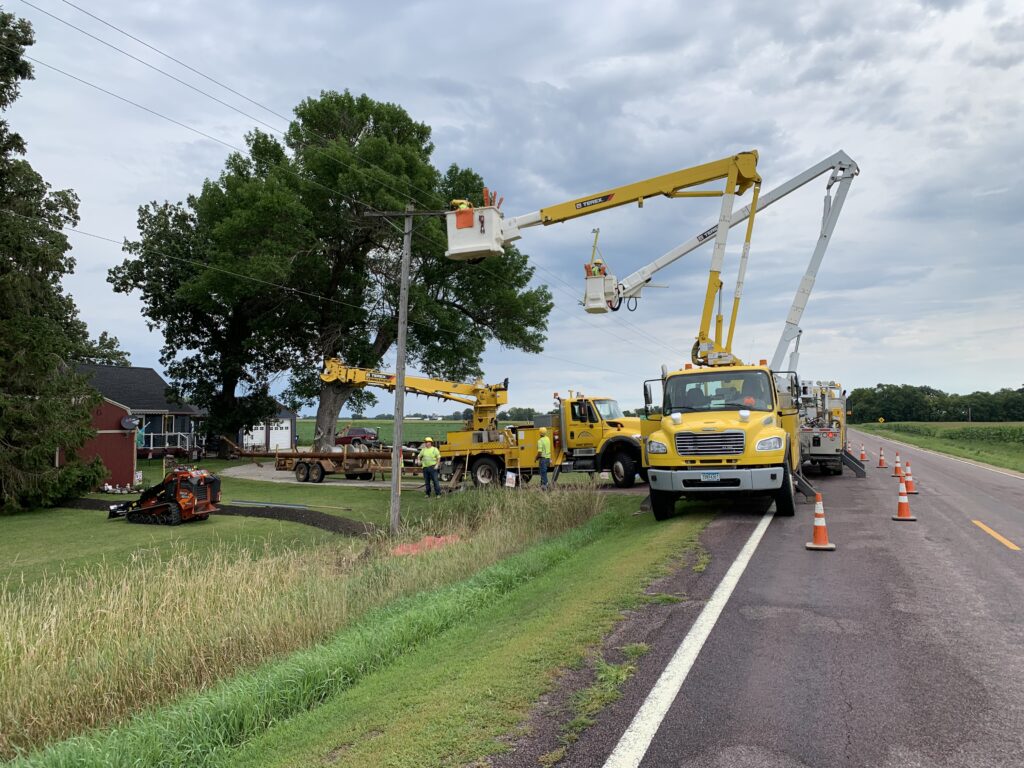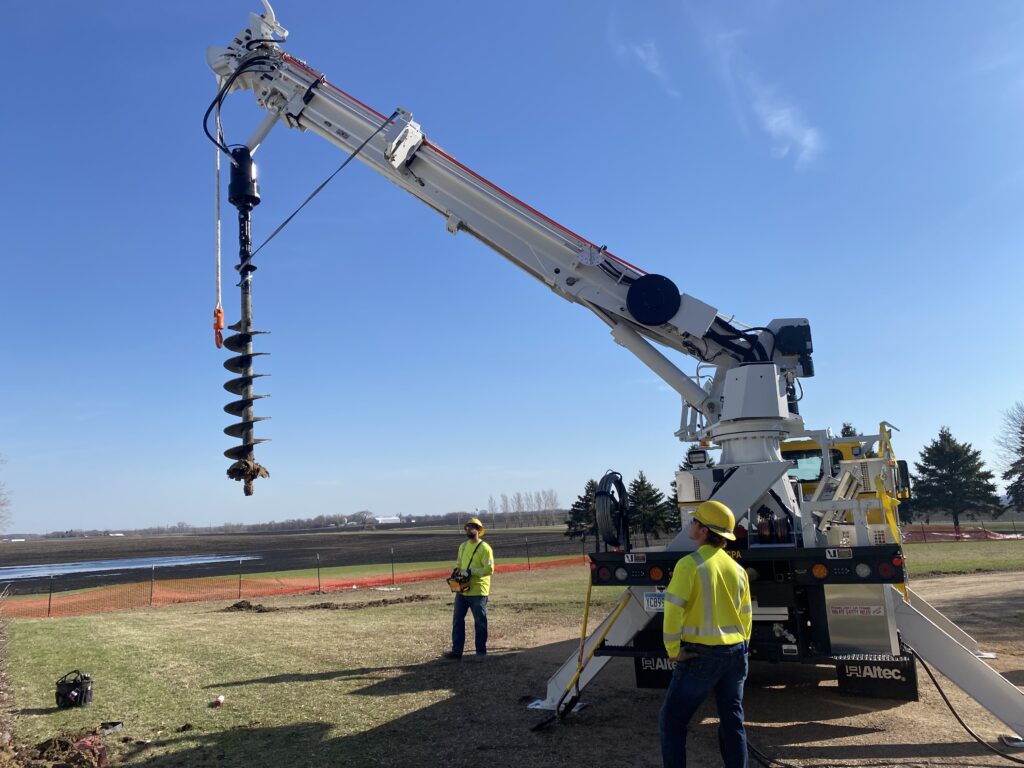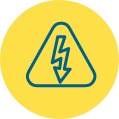RATE 2 ESTIMATING TOOL
Click here to use the online tool for estimating the increase for Rate 2 – Farm and General Services rate.
* Please note that this is an estimate based on the amount of energy that is consumed. This requires member to look at a recent bill to verify their account’s monthly kWh consumed.


We invite Members to review these Frequently Asked Questions for more information.
How much is the increase? After careful consideration of the 2024 budget and financial forecasts, the rate increase approved at the October 2023 board meeting increases overall revenue by 3.5 percent. This overall revenue increase is spread throughout all rate classes. Members can click here to review the specific increases for each rate class.
Why are changes to the rates necessary? The costs of running and maintaining our electrical system over the past couple of years have increased. We have been facing inflation pressures in the cost of purchasing power, materials, fuel, and various other aspects of our operations.
How will the increase affect my bill? All rate schedules are seeing an increase, which includes an increase in the System Delivery Charge and a slight increase in the energy charge. Members can click here to review the specific increases for each rate class. We also have an online estimating tool (click here for the bill estimator) for Rate 2, our Farm and General Services rate, that can provide an estimate on the anticipated increase based on the account’s monthly electrical use.
When will this change go into effect? The changes to the retail rates are effective January 1, 2024, and will appear on the monthly billing statements received in February.
When was the last time the Co-op had a general rate increase? The last time we had an increase across all rate classes was in 2017.
What is the purpose of the System Delivery Charge? The System Delivery Charge (SDC) is a set (or fixed) amount that’s on your bill every month, regardless of the amount of electricity that you use. It covers some of the costs for the materials (like wires, poles, and equipment) that bring power to your home, farm, or business. It also helps to pay for services like restoring power during outages.
When was the last time that the system delivery charge increased? The system delivery charge has remained at $36 since 2018 (for Rate 2).
What is the basis of the energy charge? The amount of energy you use is multiplied by a rate called the per kilowatt-hour rate. It covers our costs for buying the electricity that members require, and some of the costs for operating our system that are not captured in our system delivery charge (SDC).
What can members do to reduce their electric bill? The most direct way that all members can influence their electric bill is by reducing the monthly electricity that is consumed by appliances, heating/cooling, lighting, and electronic devices. SmartHub is a key account management tool that members can utilize to help track consumption and manage their accounts. Enrolling in our load management programs can also provide savings in the form of either a reduced energy rate or monthly bill credit. Rebates offered by the Co-op for energy efficient appliances, smart thermostats, and other energy saving equipment can provide additional value. We’re encouraging members to contact us if they have questions about their electric bill or for advice on how to start saving today. Members can also visit our website for energy saving tips and to learn about the various load management programs (click here for energy saving tips).
Has the Co-op’s new headquarters caused the need for a rate increase? Although there are some depreciation expenses with the building, the new facility, completed in 2020, was largely financed using proceeds from the sale of the Co-op’s Direct TV business. We are fortunate to not be carrying any debt on the facility.
Should we expect a rate increase the following year? We are anticipating a similar increase in 2025; however, we only raise rates when it is necessary, and we will revisit future rates when it is deemed necessary.
How will the rate increase affect MCPA’s profits? We are a not-for-profit, member-owned electric cooperative. We exist to serve our member owners with reliable and affordable power. Any profits we receive are allocated back to you in the form of capital credits.
Should I be concerned about the cooperative’s future stability? No, periodically the Co-op must raise rates to ensure we collect sufficient revenues to cover our costs. It is the responsibility of the Co-op’s management team and Board of Directors to monitor co-op’s financial stability-which they do monthly through our budgeting and financial forecast processes.

Below are the three major components of your electric bill to ensure members have a good understanding of what makes up your bill.
1. SYSTEM DELIVERY CHARGE (SDC) – The System Delivery Charge (SDC) is a set (or fixed) amount that’s on your bill every month, regardless of the amount of electricity that you use. It covers some of the costs for the materials (like wires, poles, and equipment) that bring power to your home, farm, or business. It also helps to pay for services like restoring power during outages. The SDC rates haven’t changed since 2018.
2. ENERGY CHARGE – The amount of energy you use is multiplied by a rate called the per kilowatt-hour rate. It covers our costs for buying the electricity that members require, and some of the costs for operating our system that are not captured in our system delivery charge (SDC). The last time we had a general rate increase was in 2017. Since then, our costs for buying the electricity you need and operating our system have continued to increase.
3. POWER COST ADJUSTMENT (PCA) – The PCA can either be a charge or credit on your bill. It’s based on how much the cooperative must pay for the variability of the costs to purchase electricity from our supplier, Great River Energy (GRE), as they purchase and sell power in the market from month to month. In 2023, our members received a bill credit seven out of nine months.
